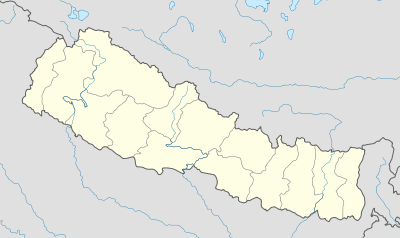Limi
| Limi Valley लिमी | |
|---|---|
| Municipality | |
 Limi Valley Location in Nepal | |
| Coordinates: 30°17′N 81°39′E / 30.29°N 81.65°ECoordinates: 30°17′N 81°39′E / 30.29°N 81.65°E | |
| Country |
|
| Zone | Karnali Zone |
| District | Humla District |
| Population (1991) | |
| • Total | 988 |
| Time zone | Nepal Time (UTC+5:45) |
Limi is a valley in Humla District in the Karnali Zone of north-western Nepal. As of the 1991 Nepal census, it had a population of 988 persons living in 169 individual households.[1]
Geography
Limi is a remote Trans-Himalayan Valley in north-west Nepal bordering Tibet. Its remoteness has made it unknown to tourists until very recently. It consists of three villages: Til (4100 m elevation) in the west; Jhang (3930 m) in the east; and the biggest village, Halji (3700 m), in the middle. It has strong ties to Tibet, and has maintained many aspects of traditional Tibetan culture. The valley has monasteries over 800 years old, which are still in use today.
History
There is a long tradition of trade and cultural exchange between this part of Nepal and Tibet. Due to its remoteness to other parts of Nepal and district headquarter Simikot, people living in Limi still rely on trade with Tibet.
Limi Villages
There are three villages in Limi - Til, Halji and Jhang. Til is closest village of Limi to the Tibet-China border. Halji located at heart of limi. And Jhang meets other side border to Burang, Tibet.
Til Full view of Til village, captured by Wangdue Tila or Til village is most least population village of Limi, of around 30 families living in there. A 300 years age of monastery called Kunzum Do-Nag Choeden Monastery is situated left crossing small river. |
Halji Halji monastery: more than 800 years old, captured by Wangdue Halji, more than 300 living people, Limi's largest population village and it situated between Tila and Jhang. More than 800 years old historical monastery is in there. |
JhangJhang is well situated village according to geographical than two other villages. It has population around 290. Around 250 years age of monastery is in there. It touches other side of border to Tibet, China. And That makes them more easy to transport than other two. |
Source of Life
People in the valley are sustained by simple agriculture and traditional way of trading across the border of wooden handicrafts and hand made goods.
Tourist Factors
Due to its remoteness, There are so many things which recall some age ago Tibet's Condition. People in there are still following old way of system. It is also a popular destination for high altitude hiking trails.
References
- ↑ "Nepal Census 2001". Nepal's Village Development Committees. Digital Himalaya. Retrieved 4 September 2008.
External links
| |||||||||||||
